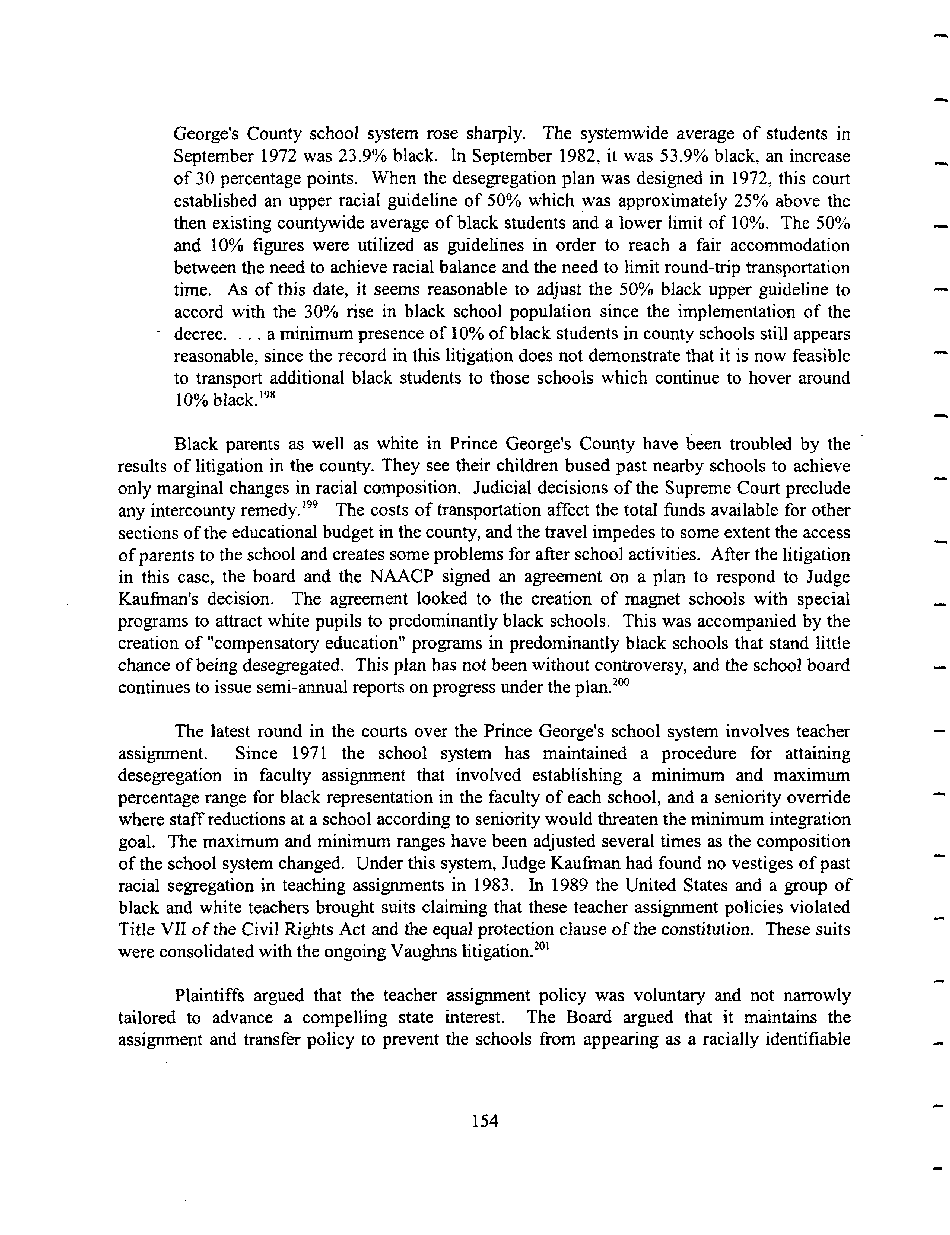|
George's County school system rose sharply. The systemwide average of students in
September 1972 was 23.9% black. In September 1982, it was 53.9% black, an increase
of 30 percentage points. When the desegregation plan was designed in 1972, this court
established an upper racial guideline of 50% which was approximately 25% above the
then existing countywide average of black students and a lower limit of 10%. The 50%
and 10% figures were utilized as guidelines in order to reach a fair accommodation
between the need to achieve racial balance and the need to limit round-trip transportation
time. As of this date, it seems reasonable to adjust the 50% black upper guideline to
accord with the 30% rise in black school population since the implementation of the
decree. ... a minimum presence of 10% of black students in county schools still appears
reasonable, since the record in this litigation does not demonstrate that it is now feasible
to transport additional black students to those schools which continue to hover around
10% black.198
Black parents as well as white in Prince George's County have been troubled by the
results of litigation in the county. They see their children bused past nearby schools to achieve
only marginal changes in racial composition. Judicial decisions of the Supreme Court preclude
any intercounty remedy.199 The costs of transportation affect the total funds available for other
sections of the educational budget in the county, and the travel impedes to some extent the access
of parents to the school and creates some problems for after school activities. After the litigation
in this case, the board and the NAACP signed an agreement on a plan to respond to Judge
Kaufinan's decision. The agreement looked to the creation of magnet schools with special
programs to attract white pupils to predominantly black schools. This was accompanied by the
creation of "compensatory education" programs in predominantly black schools that stand little
chance of being desegregated. This plan has not been without controversy, and the school board
continues to issue semi-annual reports on progress under the plan.200
The latest round in the courts over the Prince George's school system involves teacher
assignment. Since 1971 the school system has maintained a procedure for attaining
desegregation in faculty assignment that involved establishing a minimum and maximum
percentage range for black representation in the faculty of each school, and a seniority override
where staff reductions at a school according to seniority would threaten the minimum integration
goal. The maximum and minimum ranges have been adjusted several times as the composition
of the school system changed. Under this system, Judge Kaufinan had found no vestiges of past
racial segregation in teaching assignments in 1983. In 1989 the United States and a group of
black and white teachers brought suits claiming that these teacher assignment policies violated
Title VII of the Civil Rights Act and the equal protection clause of the constitution. These suits
were consolidated with the ongoing Vaughns litigation.201
Plaintiffs argued that the teacher assignment policy was voluntary and not narrowly
tailored to advance a compelling state interest. The Board argued that it maintains the
assignment and transfer policy to prevent the schools from appearing as a racially identifiable
154
�
|

